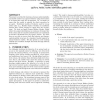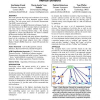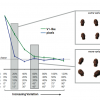1575 search results - page 190 / 315 » Unsupervised Learning of Models for Recognition |
ATAL
2006
Springer
15 years 1 months ago
2006
Springer
We present a method for learning a human understandable, executable model of an agent's behavior using observations of its interaction with the environment. By executable we ...
HUC
2010
Springer
14 years 10 months ago
2010
Springer
This work presents the design and evaluation of an activity recognition system for seven important motion related activities. The only sensor used is an Inertial Measurement Unit ...
JMLR
2006
14 years 10 months ago
2006
This paper proposes a general probabilistic framework for shape-based modeling and classification of waveform data. A segmental hidden Markov model (HMM) is used to characterize w...
NN
2008
Springer
14 years 10 months ago
2008
Springer
Learning data representations is a fundamental challenge in modeling neural processes and plays an important role in applications such as object recognition. In multi-stage Optima...
108
click to vote
CVPR
2009
IEEE
16 years 4 months ago
2009
IEEE
In recent years, large databases of natural images have
become increasingly popular in the evaluation of face and
object recognition algorithms. However, Pinto et al. previously
...



